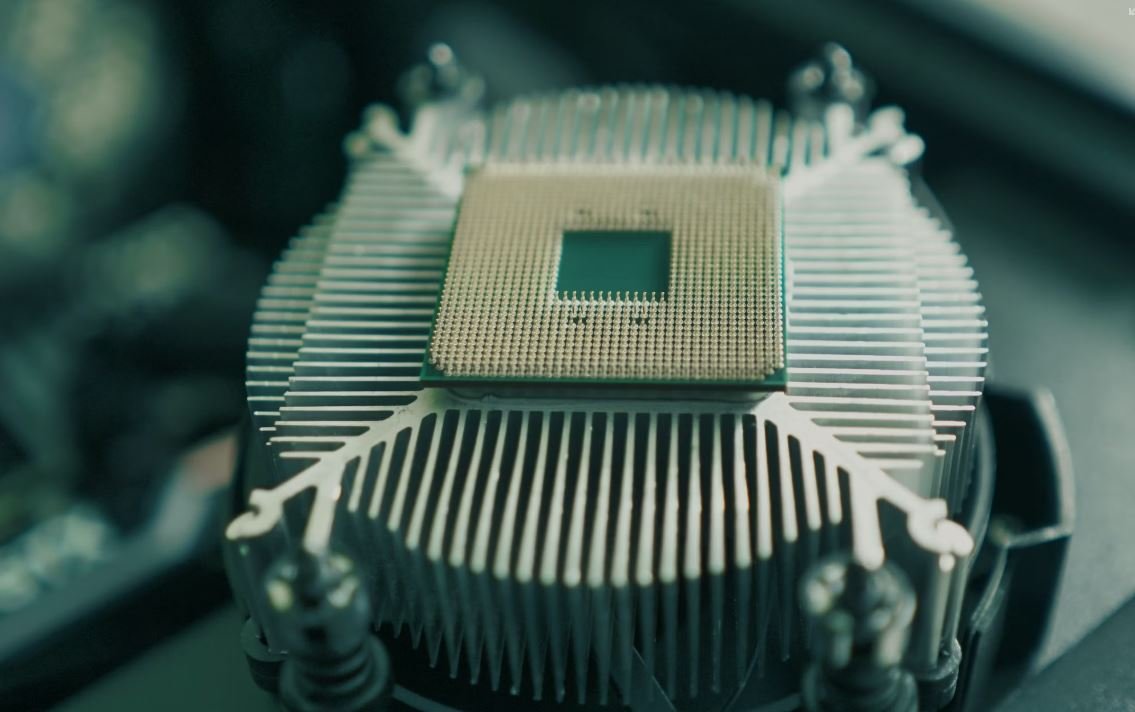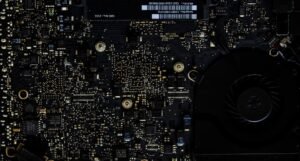5th Generation Language in Computer
Computers use various programming languages to carry out tasks and execute commands. One such language is the 5th generation language (5GL), which is designed to be more user-friendly and efficient. In this article, we will explore the features and applications of 5GL in computer programming.
Key Takeaways:
- 5th generation language (5GL) is designed to be more user-friendly and efficient.
- It enables non-programmers to develop applications easily.
- 5GL focuses on natural language programming and artificial intelligence.
- It automates code generation and reduces the need for manual coding.
- 5GL is mainly used in complex domains such as AI, robotics, and expert systems.
**5th Generation Language** (5GL) is an advanced programming language that aims to make programming accessible to a wide range of users, even those without extensive programming knowledge. *It focuses on simplifying the programming process and reducing the amount of manual coding required.* While traditional programming languages primarily target developers and programmers, 5GL is designed to cater to domain experts, researchers, and even hobbyists who may not have a strong programming background.
5GL primarily emphasizes **natural language programming** (NLP) and **artificial intelligence** (AI) techniques. These languages allow users to write programs in a more human-like syntax, making them easier to understand and write. *By leveraging AI, they enable the system to understand user intent and generate code autonomously.* This approach greatly reduces the complexity of programming, allowing non-programmers to develop applications without relying on professional programmers.
Advantages of 5GL
- **Simplifies programming:** 5GL provides a higher level of abstraction, making it easier for users to express their ideas in code.
- **Automated code generation:** The use of AI techniques enables 5GL to automatically generate code based on user input, reducing the need for manual coding.
- **Increased productivity:** With the automation provided by 5GL, developers can create applications more efficiently, resulting in higher productivity.
One interesting aspect of 5GL is its ability to generate code independently by leveraging AI algorithms. *This makes it possible for users to focus more on the desired outcome rather than spending time on writing complex code.* By automating code generation, 5GL streamlines the development process and reduces the time required to build applications.
Applications of 5GL
5GL is predominantly used in various complex domains where human-like programming languages and automated code generation are advantageous. Some notable applications include:
- **Expert systems:** 5GL allows domain experts to develop sophisticated expert systems without extensive programming knowledge.
- **Artificial intelligence:** The natural language programming capabilities of 5GL make it suitable for developing AI applications.
- **Robotics:** By simplifying programming, 5GL enables researchers to develop and control robots more easily.
Interesting information can be presented in tables. Here are three tables highlighting different aspects of 5GL:
| Features | Advantages |
|---|---|
| High-level abstraction | Easier expression of ideas |
| Automated code generation | Reduces manual coding |
| Domain | Applications |
|---|---|
| Expert systems | Sophisticated decision-making systems for different fields |
| Artificial intelligence | Development of intelligent systems and applications |
| Advantages | Disadvantages |
|---|---|
| Easier programming | May lack flexibility of lower-level languages |
| Increased productivity | May have limitations in certain complex scenarios |
In conclusion, 5th Generation Language (5GL) is a user-friendly and efficient programming language that aims to simplify the programming process by focusing on natural language programming and AI techniques. It offers advantages such as simplified programming, automated code generation, and increased productivity. With its applications in expert systems, artificial intelligence, and robotics, 5GL facilitates the development of complex systems without extensive programming knowledge. By leveraging the power of AI, 5GL paves the way for a more accessible and efficient development process for both programmers and non-programmers alike.

Common Misconceptions
Misconception 1: 5th Generation Language (5GL) is a Programming Language
One common misconception about 5th Generation Language is that it is a programming language. However, 5GL is not a programming language, but rather a level of programming languages that aims to make programming more user-friendly and accessible to non-programmers. Understanding the distinction between a programming language and a generation of programming languages is essential in dispelling this misconception.
- 5GL is a high-level abstraction of programming languages.
- 5GL allows users to create programs using natural language or visual interfaces.
- 5GL is designed to automate complex tasks and process large amounts of data.
Misconception 2: 5GL Eliminates the Need for Programmers
Another misconception is that 5GL eliminates the need for programmers altogether. While 5GL does aim to simplify programming and make it more accessible, it does not render professionals in the field obsolete. Programmers are still required to design, develop, and maintain the underlying infrastructure and logic of 5GL systems.
- Programmers play a crucial role in developing and optimizing 5GL frameworks.
- Despite 5GL’s high-level abstraction, programmers are still needed to write the underlying code.
- Programmers ensure the smooth functioning and efficiency of 5GL systems.
Misconception 3: 5GL is Only Suitable for Non-Technical Users
Some people assume that 5GL is exclusively for non-technical users who have limited programming knowledge. However, this is not the case as 5GL can be beneficial for both technical and non-technical individuals. It provides an efficient way to process and analyze large amounts of data without the need for extensive coding skills.
- Technical users can leverage 5GL’s automation capabilities to simplify complex tasks.
- Non-technical users can utilize 5GL’s visual interfaces to create applications without deep programming knowledge.
- 5GL can serve as a powerful tool for individuals of diverse technical backgrounds.
Misconception 4: 5GL Solves Every Programming Problem
One common misconception surrounding 5GL is the belief that it can solve every programming problem. While 5GL is indeed powerful and can automate many complex tasks, it is not a one-size-fits-all solution for all programming challenges. Certain programming problems may still require lower-level languages and more specific solutions.
- Certain programming tasks may require low-level optimizations that are not supported by 5GL.
- 5GL may not be the most efficient solution for time-critical applications that require real-time responsiveness.
- Different programming problems may necessitate the use of different language levels and techniques.
Misconception 5: 5GL Guarantees Bug-Free Programs
Lastly, another misconception is that 5GL guarantees bug-free programs. While 5GL can help minimize errors and make programming more intuitive, it does not guarantee the absence of bugs or logic flaws in programs. Comprehensive testing, debugging, and quality assurance practices are still necessary to ensure the reliability and correctness of 5GL applications.
- Thorough testing is essential in identifying and resolving potential issues in 5GL programs.
- 5GL provides tools and capabilities that can assist in bug detection and prevention.
- Software testing methodologies should always be employed to ensure the quality of 5GL programs.

Introduction
The article titled “5th Generation Language in Computer” discusses the evolution and features of the fifth-generation programming language (5GL) in the field of computer science. In this article, we will explore various aspects of 5GL and its impact on software development.
Table: Programming Language Generations
This table presents a comparison of different programming language generations, showcasing key characteristics and representative languages from each generation.
| Generation | Characteristic | Representative Language |
|---|---|---|
| 1GL | Machine-level language | Assembly language |
| 2GL | Low-level language | Fortran, COBOL |
| 3GL | High-level procedural language | C, Pascal |
| 4GL | Declarative language | SQL, MATLAB |
| 5GL | Natural language-based language | Prolog, OPS5 |
Table: Advantages of 5GL Applications
This table highlights the advantages of utilizing 5GL when developing software applications.
| Advantage | Description |
|---|---|
| Ease of use | 5GL enables developers to write code using natural language-like syntax, making it intuitive. |
| Higher productivity | By automating complex tasks, 5GL empowers developers to be more productive and efficient. |
| Portability | 5GL applications can be deployed across multiple platforms without significant modifications. |
| Natural language capabilities | Allows software code to be easily readable and understandable by both programmers and non-programmers. |
Table: Features of 5GL Languages
This table outlines the distinguishing features and characteristics of 5GL programming languages.
| Feature | Description |
|---|---|
| Knowledge representation | Ability to represent and manipulate complex domain-specific knowledge in software applications. |
| Inference engine | 5GL languages employ logic-based inference engines to draw conclusions and make decisions. |
| Natural language processing | Capable of understanding and responding to human language input. |
| Distributed computing support | Facilitates the development of software capable of running on multiple connected devices simultaneously. |
Table: Examples of 5GL Programming Languages
This table showcases some popular 5GL languages along with their main application domains.
| Language | Main Application Domain |
|---|---|
| Prolog | Artificial intelligence, expert systems |
| OPS5 | Rules-based programming, expert systems |
| Lisp | Symbolic computing, artificial intelligence |
| KRL | Robotic control systems |
Table: Disadvantages of 5GL
This table highlights some of the potential drawbacks associated with using 5GL in software development.
| Disadvantage | Description |
|---|---|
| Steep learning curve | Mastering 5GL languages can be time-consuming, requiring significant domain knowledge. |
| Limited performance optimization | Due to high-level abstractions, certain performance optimizations may be restricted. |
| Less control over low-level operations | 5GL languages abstract low-level details, limiting fine-grained control over specific actions. |
Table: Industries Benefiting from 5GL
This table highlights various industries that leverage 5GL applications for their specific needs or domains.
| Industry | Applications |
|---|---|
| Healthcare | Diagnosis support systems, personalized medicine |
| Finance | Risk assessment, algorithmic trading |
| Manufacturing | Process automation, quality control |
| Automotive | Autonomous vehicles, driver assistance systems |
Table: Notable 5GL Technologies
This table presents some notable technologies that have emerged from the advancements in 5GL.
| Technology | Description |
|---|---|
| Artificial Neural Networks | Machine learning systems inspired by the human brain’s neural network structure. |
| Natural Language Processing | Technology allowing computers to understand and respond to human speech or text. |
| Expert Systems | Software systems capable of mimicking human decision-making in specific domains. |
| Genetic Algorithms | Iterative process inspired by natural selection, used for optimization and problem-solving. |
Table: 5GL and Future Software Development
This table explores the potential impact of 5GL on the future of software development and its related technologies.
| Aspect | Description |
|---|---|
| Role of AI | 5GL, coupled with AI, will enable software systems to learn, adapt, and solve complex problems independently. |
| Human-Machine Collaboration | 5GL will foster closer collaboration between humans and machines, making software development more accessible to a wider audience. |
| Domain-Specific Languages | 5GL will boost the development of domain-specific languages tailored to unique application requirements. |
Conclusion
In this article, we explored the concepts and features of 5th generation programming languages (5GL) and their significance in the field of computer science. We compared different generations of programming languages, discussed the advantages and disadvantages of 5GL, and highlighted various applications and technologies associated with 5GL. Looking ahead, 5GL holds immense potential to revolutionize software development, driving advancements in artificial intelligence and fostering collaboration between humans and machines. With its natural language capabilities and knowledge representation, 5GL paves the way for more accessible and efficient programming, ultimately shaping the future of software development.




